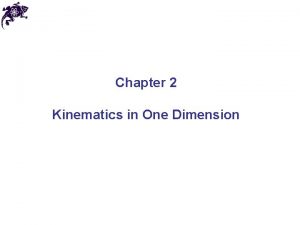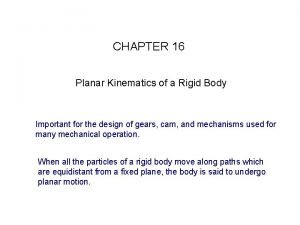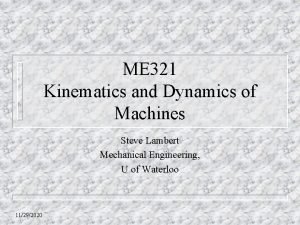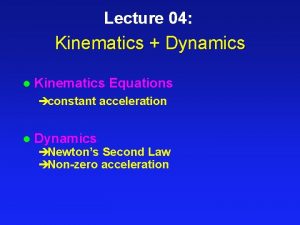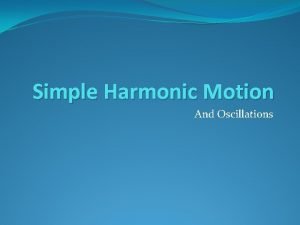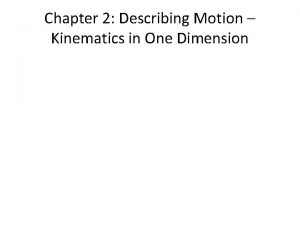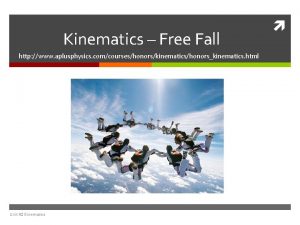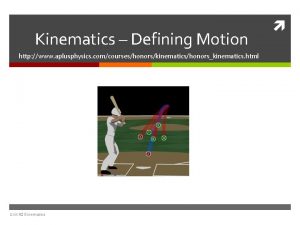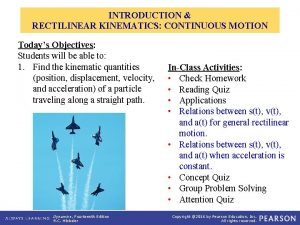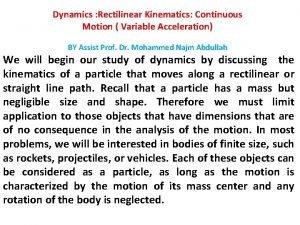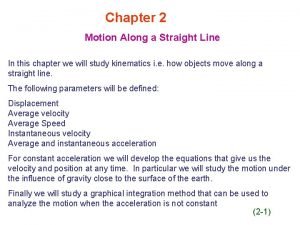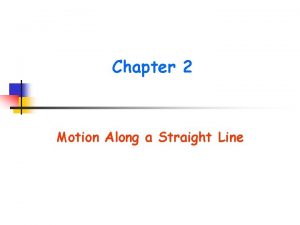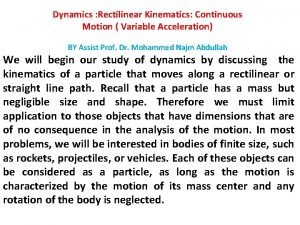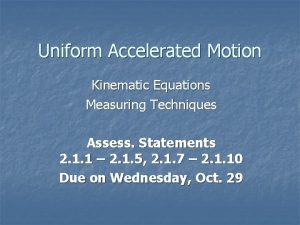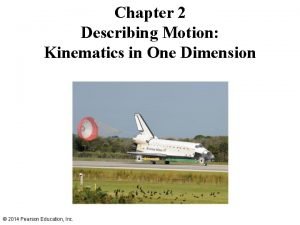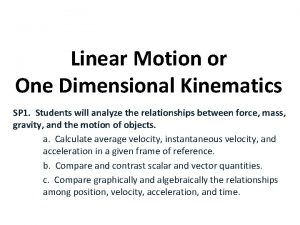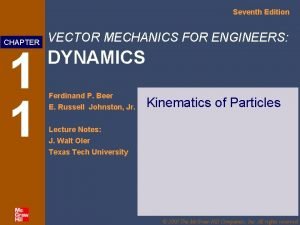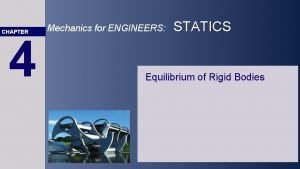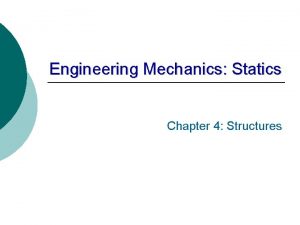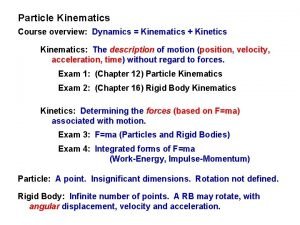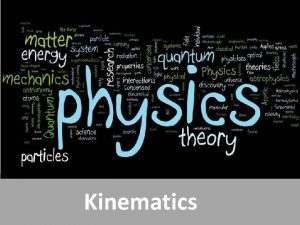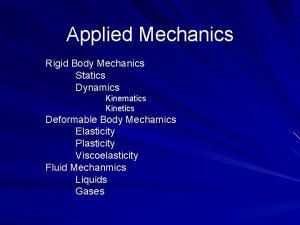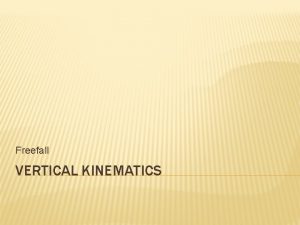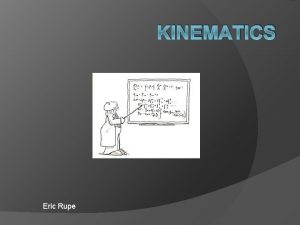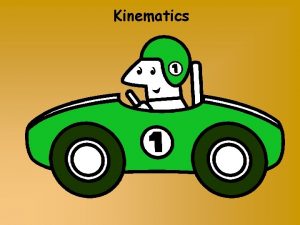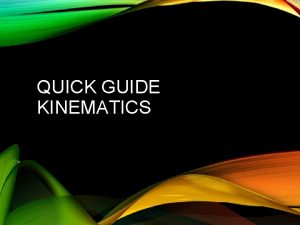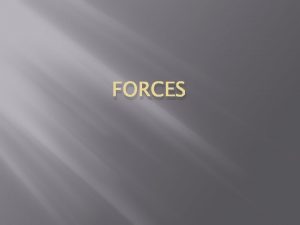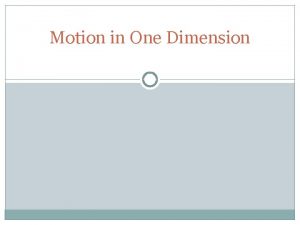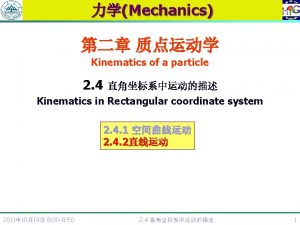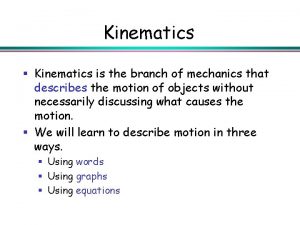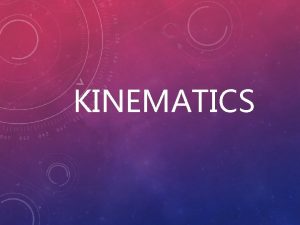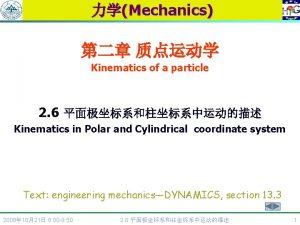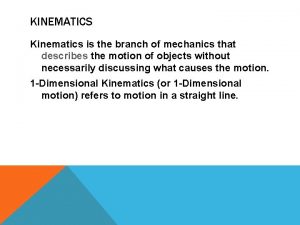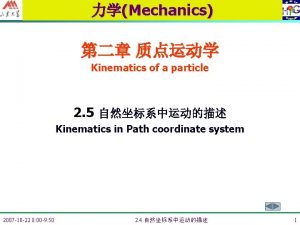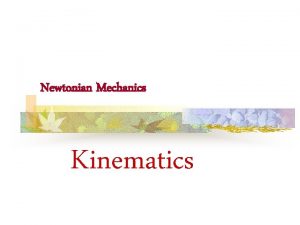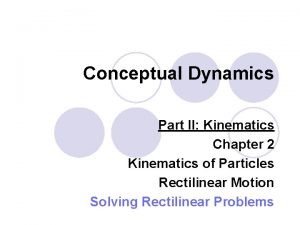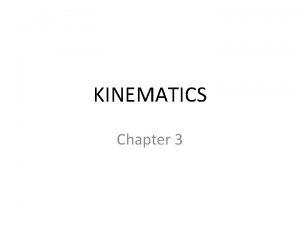OVERVIEW Kinematics Motion Ch 2 3 Mechanics Dynamics























- Slides: 23

OVERVIEW Kinematics (Motion) Ch. 2 & 3 Mechanics Dynamics (Forces) Ch. 4

UNIT 1: KINEMATICS IN ONE DIMENSION AKA Linear Motion

PART ONE: DISPLACEMENT, VELOCITY, AND ACCELERATION Book Sections 2. 1 -2. 3

WORDS TO KNOW • Rate: quantity divided by time • Ex: meters per second (m/s) or Liters per minute (L/min) • Relative: in relation to or with respect to • Constant: staying the same

DISTANCE VS. DISPLACEMENT • Distance • the extent of space between points OR • how much ground an object has covered during motion • scalar • Ft, m, cm, in, miles •

DISPLACEMENT •

PRACTICE PROBLEM 1 • A honeybee leaves the hive and travels a total distance of 2 km before returning to the hive. What is the magnitude of the displacement vector of the bee? • Displacement = 0 km. Since the bee returns to the hive, he has no overall change in position.

PRACTICE PROBLEM 2 A cat walks back and forth on a ledge. It walks 13 m east, turns around and walks 15 m west, and turns around again and walks 10 m east. • What is the total distance traveled by the cat? • Distance = 13 + 15 + 10 = 38 m. • What are the magnitude and direction of the displacement vector? • Displacement = 13 – 15 + 10 = 8 m east.

PRACTICE PROBLEM 3 Determine the magnitude and direction (positive or negative) of the displacement vectors. • Initial position = -4. 0 cm, final position = +5. 0 cm • Displacement = final – initial = 5. 0 – (-4. 0) = +9. 0 cm • Initial position = 8. 0 cm, final position = -2. 0 cm • Displacement = final – initial = -2. 0 – 8. 0 = -10. 0 cm

SPEED •

VELOCITY •

VELOCIT Y • Instantaneous Speed/Velocity - measured at a specific point instead of over the total duration • Like a cop with a radar gun • When we just refer to “speed” or “velocity” we usually mean instantaneous. • Constant Velocity - the object’s motion is maintained in a straight line with out a decrease or increase

PRACTICE PROBLEM 4 •

PRACTICE PROBLEM 5 •

PRACTICE PROBLEM 6 •

PRACTICE PROBLEM 7 •

PRACTICE PROBLEM 8 •

ACCELERATION •

ACCELERATIO N • Three ways to cause an acceleration • Speed up (a > 0) • Slow down (deceleration a < 0) • Change direction • If velocity is constant AND not changing direction, then a = 0. • Instantaneous Acceleration – measured at a particular instant in time.


PRACTICE PROBLEM 9 •

PRACTICE PROBLEM 10 •

PRACTICE PROBLEM 11 •
 Aplusphysics kinematics-horizontal kinematics
Aplusphysics kinematics-horizontal kinematics Dynamics kinematics
Dynamics kinematics Dynamics rigid body kinematics
Dynamics rigid body kinematics Kinematics and dynamics of machines
Kinematics and dynamics of machines Kinematic equaitons
Kinematic equaitons Fluid kinematics example
Fluid kinematics example Kinematics of simple harmonic motion
Kinematics of simple harmonic motion Describing motion kinematics in one dimension
Describing motion kinematics in one dimension Aplusphysics kinematics-free fall
Aplusphysics kinematics-free fall Aplusphysics kinematics-free fall answers
Aplusphysics kinematics-free fall answers Rectilinear kinematics: continuous motion
Rectilinear kinematics: continuous motion Formula for time of flight in projectile motion
Formula for time of flight in projectile motion Rectilinear kinematics continuous motion
Rectilinear kinematics continuous motion Describe motion along a straight line
Describe motion along a straight line Kinematics: motion along a straight line
Kinematics: motion along a straight line Rectilinear kinematics: continuous motion
Rectilinear kinematics: continuous motion Define variable acceleration
Define variable acceleration Rearranging kinematic equations
Rearranging kinematic equations Describing motion kinematics in one dimension
Describing motion kinematics in one dimension The ticker tape case graph
The ticker tape case graph Vector mechanics for engineers: dynamics
Vector mechanics for engineers: dynamics Mechanics dynamics aesthetics examples
Mechanics dynamics aesthetics examples Statics
Statics Chapter 4 statics
Chapter 4 statics

